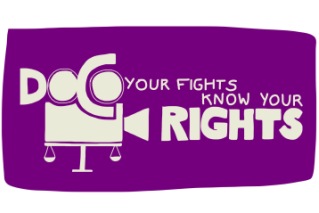
Dear Friends,
Have you seen protesters being beaten during demonstrations on TV? In a democracy, there is room for demonstration and for criticism of the government, but in many cases demonstrations are opposed with violence. We all have an interest in bringing to justice people who use violence.
A few months ago I told you about the DocoRights project, which aims to protect the freedom of expression and protest by giving support and advice to demonstrators and protesters, and by supporting the photography of demonstrations and protests. As part of the project, ACRI together with our partners ActiveStills and Shatil, have facilitated several photography workshops for activists. The workshop has now grown into a guidebook, which outlines everything you need to know about photographing demonstrations and protests.
Accurate documentation is a powerful campaign tool. It allows you to portray the issues more effectively to the general public, for example by publishing a video on social networks, or reporting in independent media and can also be used as evidence in court. Today, in the era of smartphones, it seems simple to document an incident at a demonstration, but often activists are disappointed when they realise that the footage they recorded is inaccurate or has no value. For example, there are many cases of documented police brutality at demonstrations, but it is impossible to use the footage because the camera was shaky, the photographer was too far away or not involved in the event, or the material is not sufficient evidence. Another advantage of documenting protests is that the presence of the camera itself can help to reduce or even prevent police brutality and rights violations from occurring.
The guidebook on documenting demonstrations, written by Sapir Sluzker-Amran from ACRI and Keren Manor and Oren Ziv from ActiveStills, explains how to record demonstrations and protests accurately and with good quality. The guidebook includes information on how to prepare for an event or demonstration; what equipment to bring and where to locate yourself; how to film different types of events such as a march, interview or an unusual incident; what is particularly important to pay attention to when filming from smartphones; how to edit a video easily and more.
Are you going to a protest? Then it is worth reading this guidebook. Do you know social activists? If so please pass this information on to them. Want to join the project and help ACRI to preserve the freedom of speech and protest? Please contact the Project Coordinator, Shirli Nadav at Docorights@acri.org.il.
Eid Mubarak,
Sharon
![]()
Sharon Abraham-Weiss
Executive Director
The Association for Civil Rights in Israel







